Wind Tunnel Investigation of Twisted Wind Effect on a Typical Super-Tall Building
Abstract
:1. Introduction
2. Experimental Setups
2.1. Simulation of Conventional and Twisted Wind Fields
2.2. Pressure Test Model of a Super-Tall Building
3. Analysis of Test Results
3.1. Data Processing
3.2. Wind Pressure Distributions
3.2.1. Mean Pressure
3.2.2. Extreme Pressure
- We selected ten data segments with a duration of 10 min in full-scale, and ranked the absolute values of the extreme wind pressure coefficient of each segment in ascending order.
- We used Equations (16) and (17) to calculate the mode and dispersion:where is the wind pressure coefficient obtained in the previous step, and the values of and are taken in accordance with Table 1.
- The extreme value is calculated using Equation (18):where y = 1.4 corresponding to a transcendence probability of 22%.
- We take as or as .
3.3. Characteristics of Wind Loads under Twisted Wind Effect
3.3.1. Mean and Fluctuating Local Wind Force Coefficients
3.3.2. Mean Overturning Moment Coefficients
3.4. Characteristics of Correlation and Coherence of Local Wind Loads under Twisted Wind Effect
3.4.1. Correlation Coefficients
3.4.2. Characteristics of Coherence
3.4.3. Power Spectra of Local Across-Wind Load
4. Concluding Remarks and Future Prospects
- The mean wind pressures on the building facades demonstrate asymmetric distribution under the twisted effect. With an oblique wind approach direction (e.g., ≥ 30° under TWF30), one of the side facades may simultaneously be subjected to both positive and negative mean wind pressures in different parts. Compared with the application of CWF, both side facades are subjected to less suction force due to the twisted wind effect;
- Quantified by skewness and kurtosis, the wind pressures on the windward facade still follow the Gaussian distribution under the twisted wind effect, whilst those on the side and leeward facades demonstrate more prominent non-Gaussianess than is the case with a conventional wind field. The absolute values of the peak pressure coefficients under the twisted wind effect do not exceed those in the conventional wind field case, indicating that extreme wind pressures are mitigated under the twisted wind effect;
- Compared with CWF, the amplitudes of the along- and across-wind overturning moments only change slightly in TWF, suggesting that the wind tunnel test results obtained with CWFs are generally applicable to those with TWFs. Meanwhile, the torsional moment is significantly affected by the twisted wind effect, although the torsion is usually not a major concern for the wind-resistant design of tall buildings with square sectional shapes;
- Both the correlations and the coherences among local across-wind loads at various heights are diminished under the twisted wind effect, which is believed to be a result of the difference between the vortex shedding patterns in TWFs and those in CWFs. According to the power spectra of the local across-wind load at different heights, the across-wind responses of the lower section of a building are mitigated under the twisted wind effect.
Author Contributions
Funding
Data Availability Statement
Conflicts of Interest
References
- Ekman, V.W. On the influence of the Earth’s rotation on ocean currents. Ark. Mat. Astr. Fys. 1905, 2, 1–52. [Google Scholar]
- Dyrbye, C.; Hansen, S.O. Wind Loads on Structures. Wiley: New York, NY, USA, 1997. [Google Scholar]
- Mickle, R.E.; Cook, N.J.; Hoff, A.M.; Jensen, N.O.; Salmon, J.R.; Taylor, P.A.; Tetzlaff, G.; Teunissen, H.W. The Askervein Hill Project: Vertical profiles of wind and turbulence. Bound. Layer Meteorol. 1988, 43, 143–169. [Google Scholar] [CrossRef]
- Cham, C.S.Y.; Kwok, K.C.S. Terrain characterization and design wind profiles for Hong Kong. Hong Kong Eng. Trans. 2011, 18, 2–9. [Google Scholar]
- Tse, K.T.; Weerasuriya, A.U.; Kwok, K.C.S. Simulation of twisted wind flows in a boundary layer wind tunnel for pedestrian-level wind tunnel tests. J. Wind Eng. Ind. Aerodyn. 2016, 159, 99–109. [Google Scholar] [CrossRef]
- Mendenhall, B.R. Statistical Study of Frictional Wind Veering in the Planetary Boundary Layer. Ph.D. Dissertation, Colorado State University, Fort Collins, CO, USA, 1967. [Google Scholar]
- Tamura, Y.; Iwatani, Y.; Hibi, K.; Suda, K.; Nakamura, O.; Maruyama, T.; Ishibashi, R. Profiles of mean wind speeds and vertical turbulence intensities measured at seashore and two inland sites using Doppler sodars. J. Wind Eng. Ind. Aerodyn. 2007, 95, 411–427. [Google Scholar] [CrossRef]
- Liu, Z.; Zheng, C.; Wu, Y.; Song, Y. Investigation on characteristics of thousand-meter height wind profiles at non-tropical cyclone prone areas based on field measurement. Build. Environ. 2018, 130, 62–73. [Google Scholar] [CrossRef]
- He, Y.C.; Chan, P.W.; Li, Q.S. Observations of vertical wind profiles of tropical cy-clones at coastal areas. J. Wind Eng. Ind. Aerodyn. 2016, 152, 1–14. [Google Scholar] [CrossRef]
- Shu, Z.R.; Li, Q.S.; He, Y.C.; Chan, P.W. Observational study of veering wind by Doppler wind profiler and surface weather station. J. Wind Eng. Ind. Aerodyn. 2018, 178, 18–25. [Google Scholar] [CrossRef]
- Kim, Y.C.; Tamura, Y.; Tanaka, H.; Ohtake, K.; Bandi, E.K.; Yoshida, A. Wind-induced responses of super-tall buildings with various atypical building shapes. J. Wind Eng. Ind. Aerodyn. 2014, 133, 191–199. [Google Scholar] [CrossRef]
- Kim, Y.C.; Bandi, E.K.; Yoshida, A.; Tamura, Y. Response characteristics of super-tall buildings—Effects of number of sides and helical angle. J. Wind Eng. Ind. Aerodyn. 2015, 145, 252–262. [Google Scholar] [CrossRef]
- Flay, R.G.J. A twisted flow wind tunnel for testing yacht sails. J. Wind Eng. Ind. Aerodyn. 1996, 63, 171–182. [Google Scholar] [CrossRef]
- Flay, R.G.J.; Vuletich, I.J. Development of a wind tunnel test facility for yacht aerodynamic studies. J. Wind Eng. Ind. Aerodyn. 1995, 58, 231–258. [Google Scholar] [CrossRef]
- Flay, R.G.J.; Locke, N.J.; Mallinson, G.D. Model tests of twisted flow wind tunnel designs for testing yacht sails. J. Wind Eng. Ind. Aerodyn. 1996, 63, 155–169. [Google Scholar] [CrossRef]
- Liu, Z.; Zheng, C.R.; Wu, Y.; Flay, R.G.J.; Zhang, K. Wind tunnel simulation of wind flows with the characteristics of thousand-meter high ABL. Build. Environ. 2019, 152, 74–86. [Google Scholar] [CrossRef]
- Zhou, L.; Hu, G.; Tse, K.T.; He, X.H. Twisted-wind effect on the flow field of tall building. J. Wind Eng. Ind. Aerodyn. 2021, 218, 104778. [Google Scholar] [CrossRef]
- Zhou, L.; Tse, K.T.; Hu, G. Experimental investigation on the aerodynamic characteristics of a tall building subjected to twisted wind. J. Wind Eng. Ind. Aerodyn. 2022, 224, 104976. [Google Scholar] [CrossRef]
- Yuan, Y.J.; Yan, B.W.; Zhou, X.H.; Yang, Q.S.; Huang, G.Q.; He, Y.C.; Yan, J.H. RANS simulations of aerodynamic forces on a tall building under twisted winds considering horizontal homogeneity. J. Build. Eng. 2022, 54, 104628. [Google Scholar] [CrossRef]
- Recommendations for Loads on Buildings. AIJ-2004. Architecture Institute of Japan: Tokyo, Japan, 2004.
- Li, X.; Li, Q.S. Prediction models for modal parameters of super-tall buildings based on field measurements. J. Struct. Eng. 2020, 146, 06019004. [Google Scholar] [CrossRef]
- Harris, R.I. An improved method for the prediction of extreme values of wind effects on simple buildings and structures. J. Wind Eng. Ind. Aerodyn. 1982, 9, 343–379. [Google Scholar] [CrossRef]
- Cook, N.J.; Mayne, J.R. A refined working approach to the assessment of wind loads for equivalent static design. J. Wind Eng. Ind. Aerodyn. 1980, 6, 125–137. [Google Scholar] [CrossRef]
- Cook, N.J. The Designer’s Guide to Wind Loading of Building Structures Part 2: Static Structures; Butterworths: London, UK, 1990. [Google Scholar]
- Melbourne, W.H. Comparison of measurements on the CAARC standard tall building model in simulated model wind flows. J. Wind Eng. Ind. Aerodyn. 1980, 6, 73–88. [Google Scholar] [CrossRef]
- Liu, Z.; Zheng, C.; Wu, Y.; Flay, R.G.J.; Zhang, K. Investigation on the effects of twisted wind flow on the wind loads on a square section megatall building. J. Wind Eng. Ind. Aerodyn. 2019, 191, 127–142. [Google Scholar] [CrossRef]
- Zhang, X.L.; Weerasuriya, A.U.; Lu, B.; Tse, K.T.; Liu, C.H.; Tamura, Y. Pedestrian-level wind environment near a super-tall building with unconventional configurations in a regular urban area. Build. Simul. 2020, 13, 439–456. [Google Scholar] [CrossRef]
- Mansour, W.; Tayeh, B.A.; Tam, L.-H. Finite element analysis of shear performance of UHPFRC-encased steel composite beams: Parametric study. Eng. Struct. 2022, 271, 114940. [Google Scholar] [CrossRef]
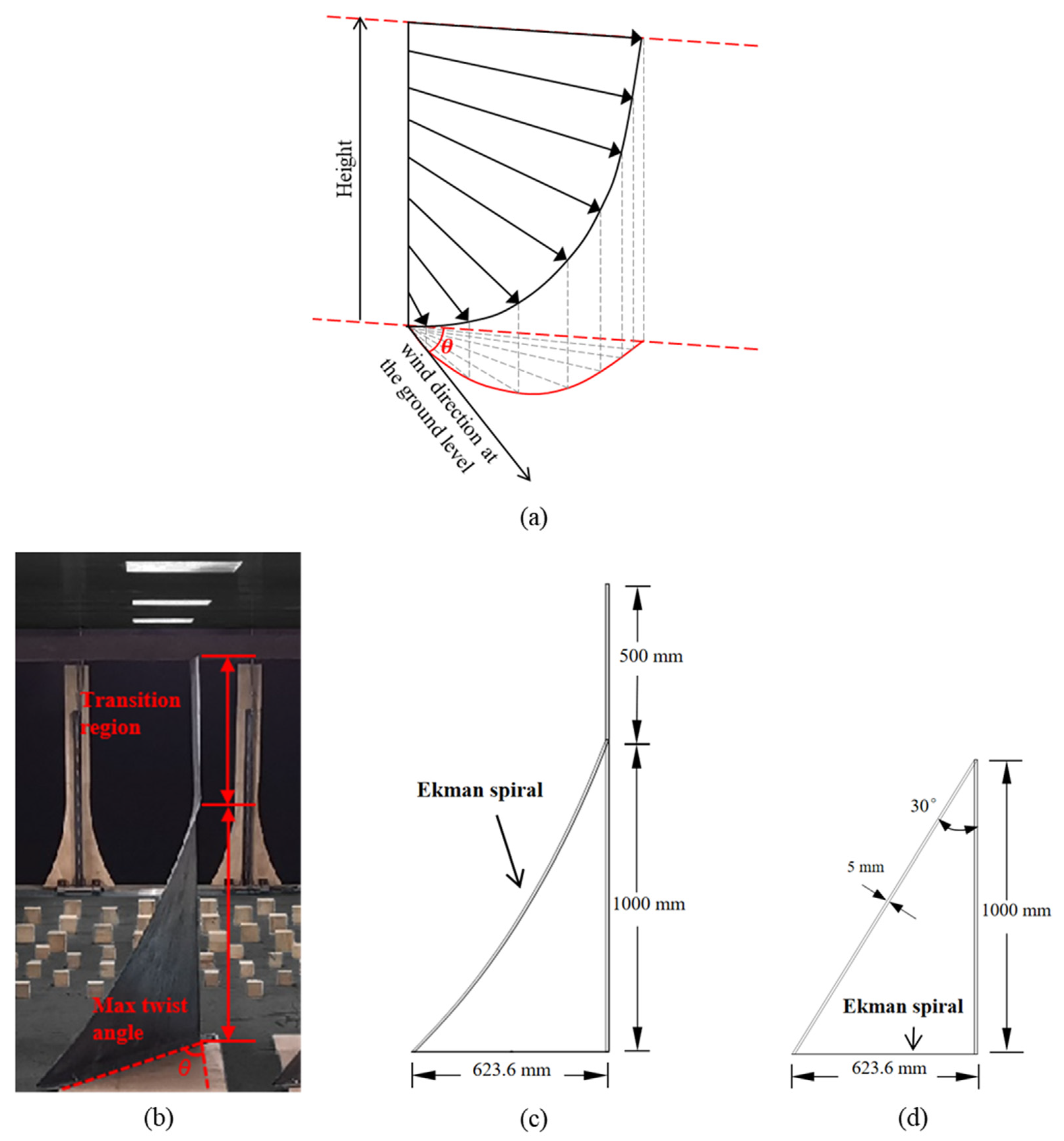

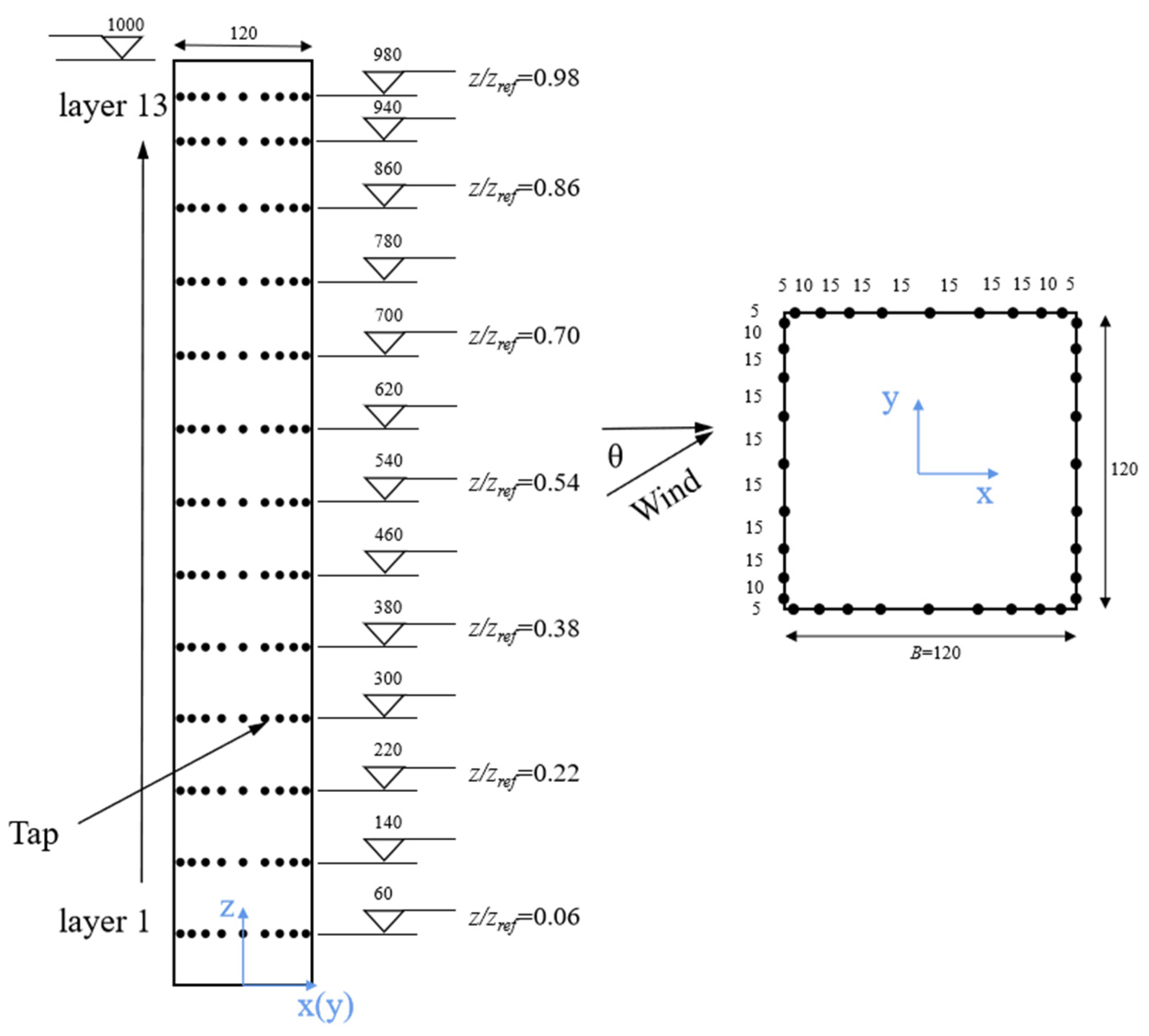
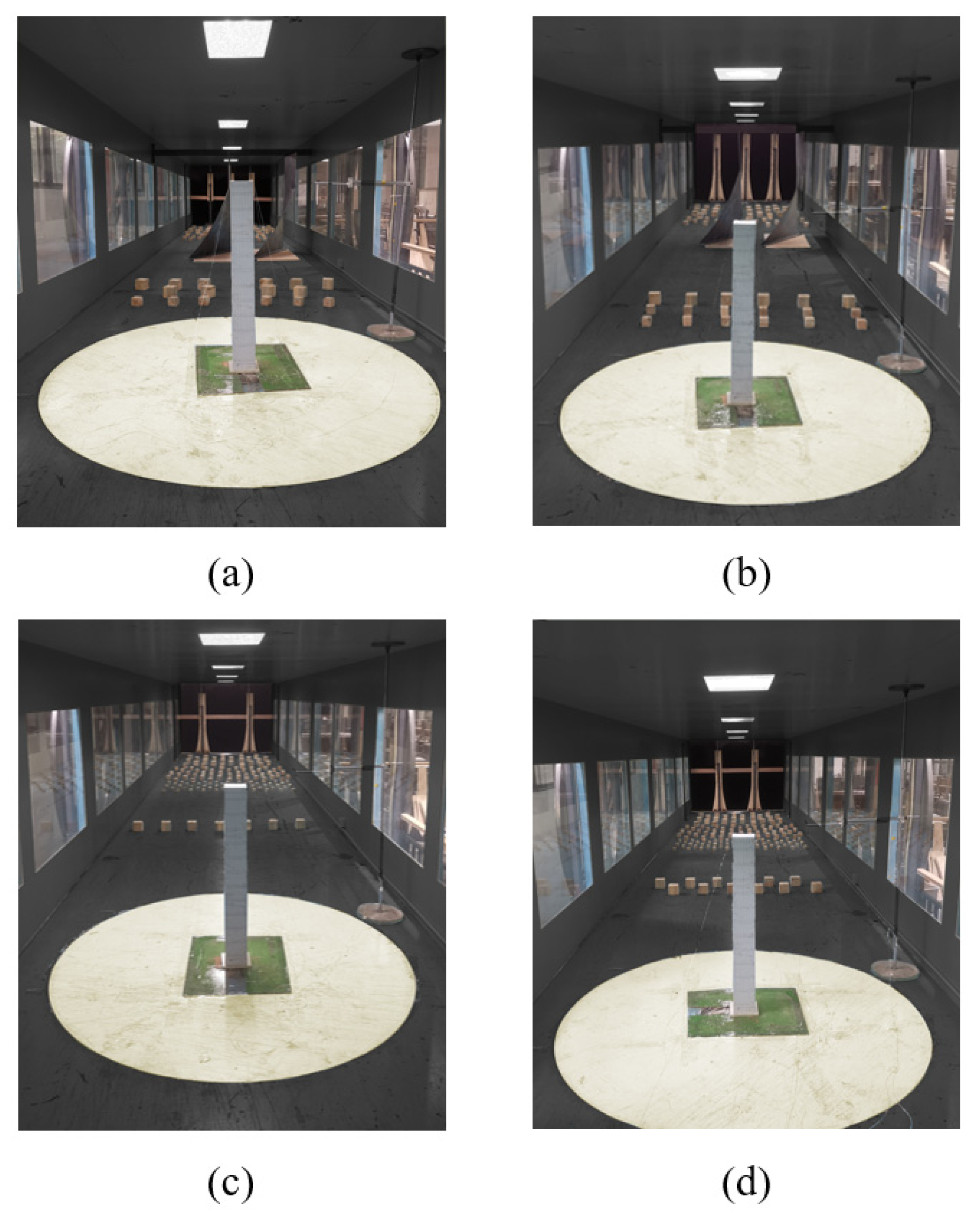
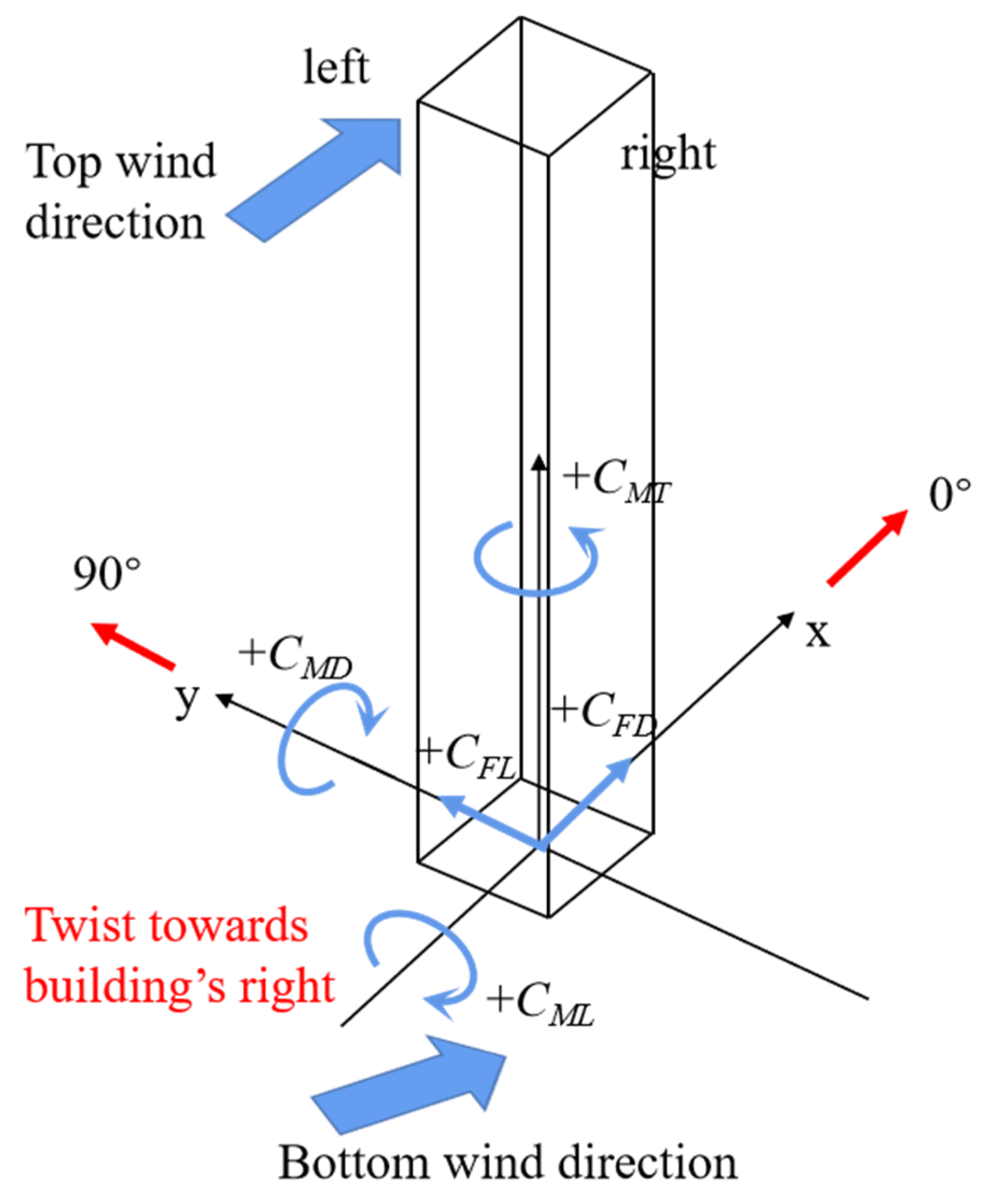
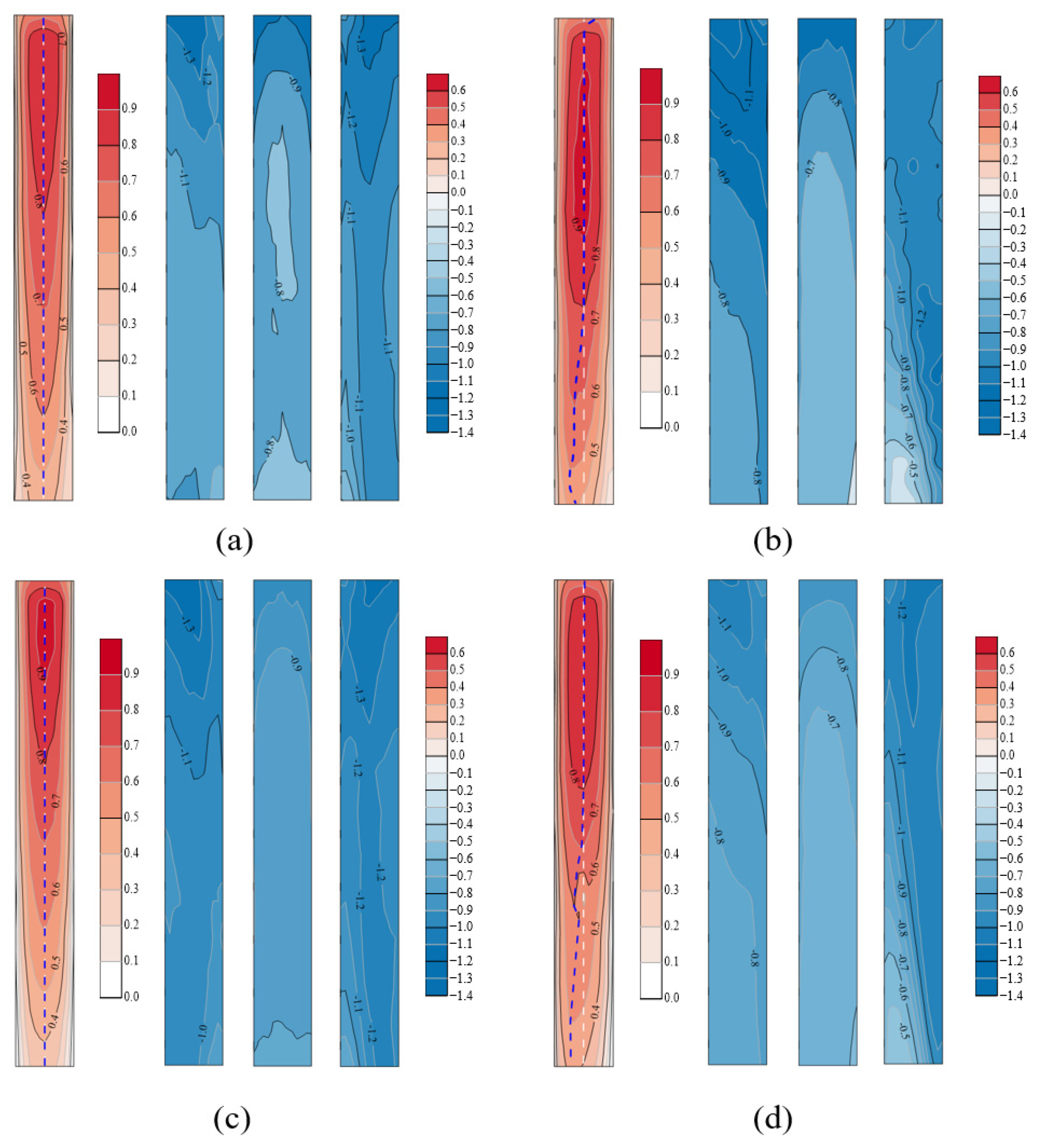

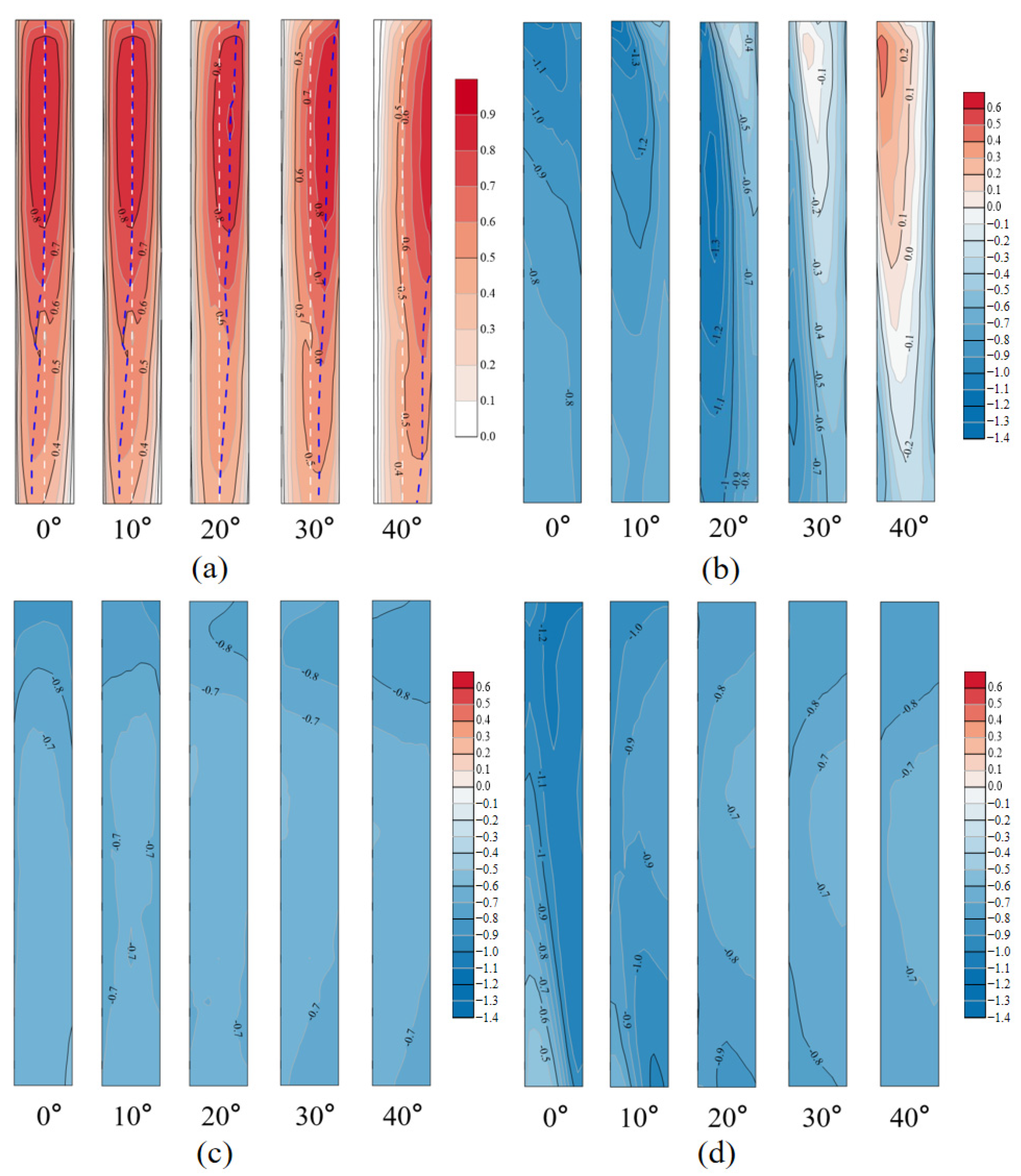
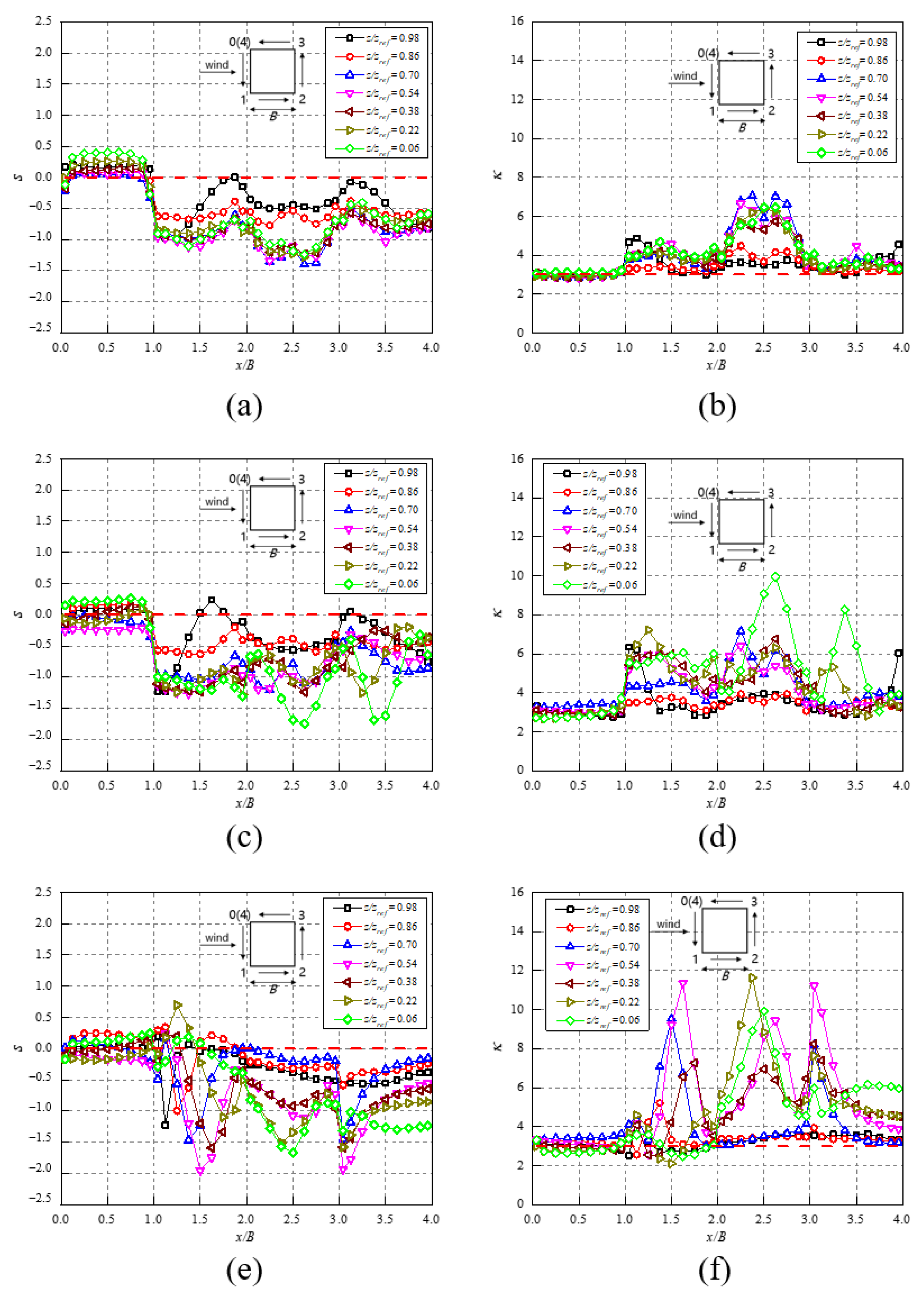
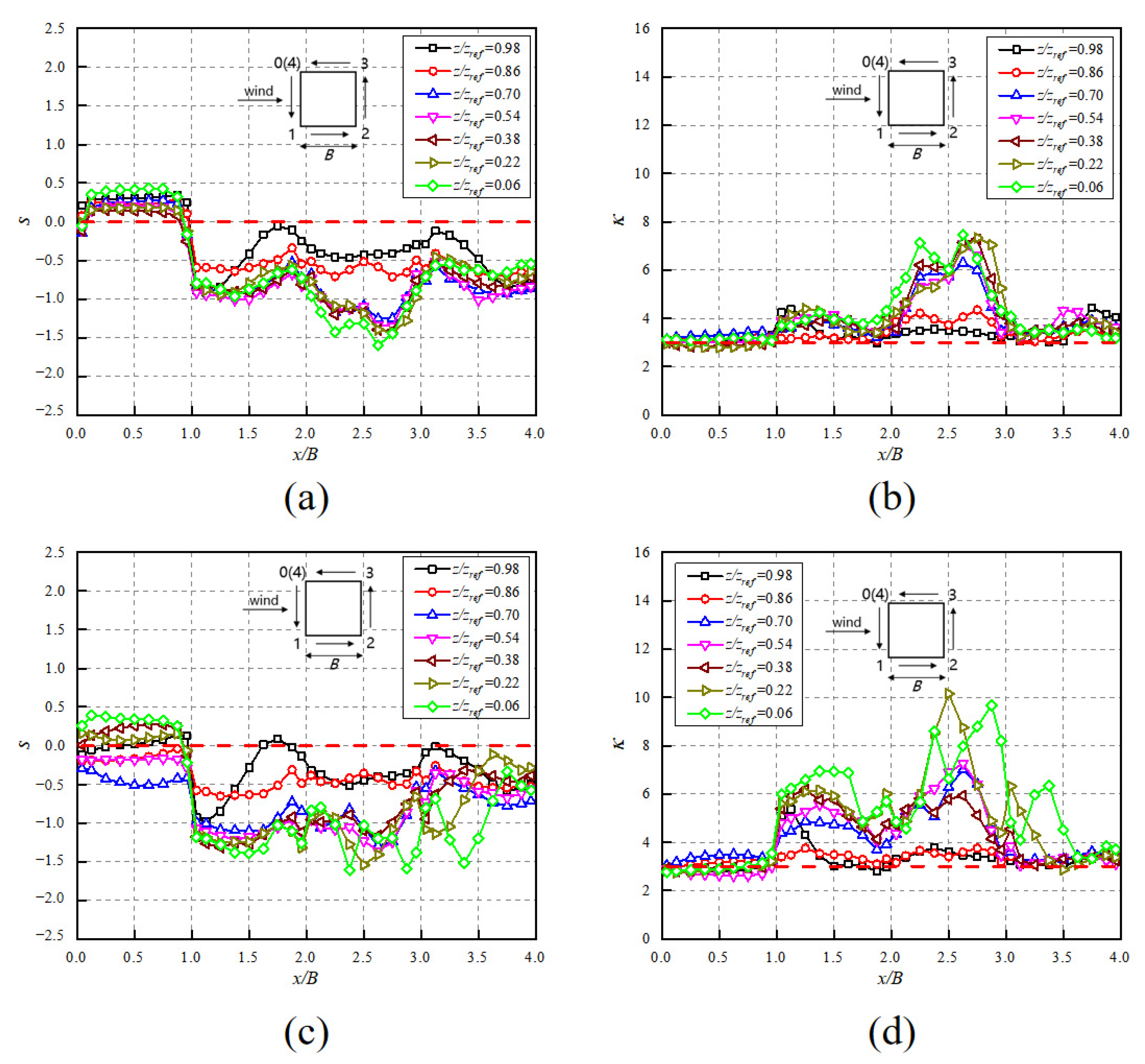
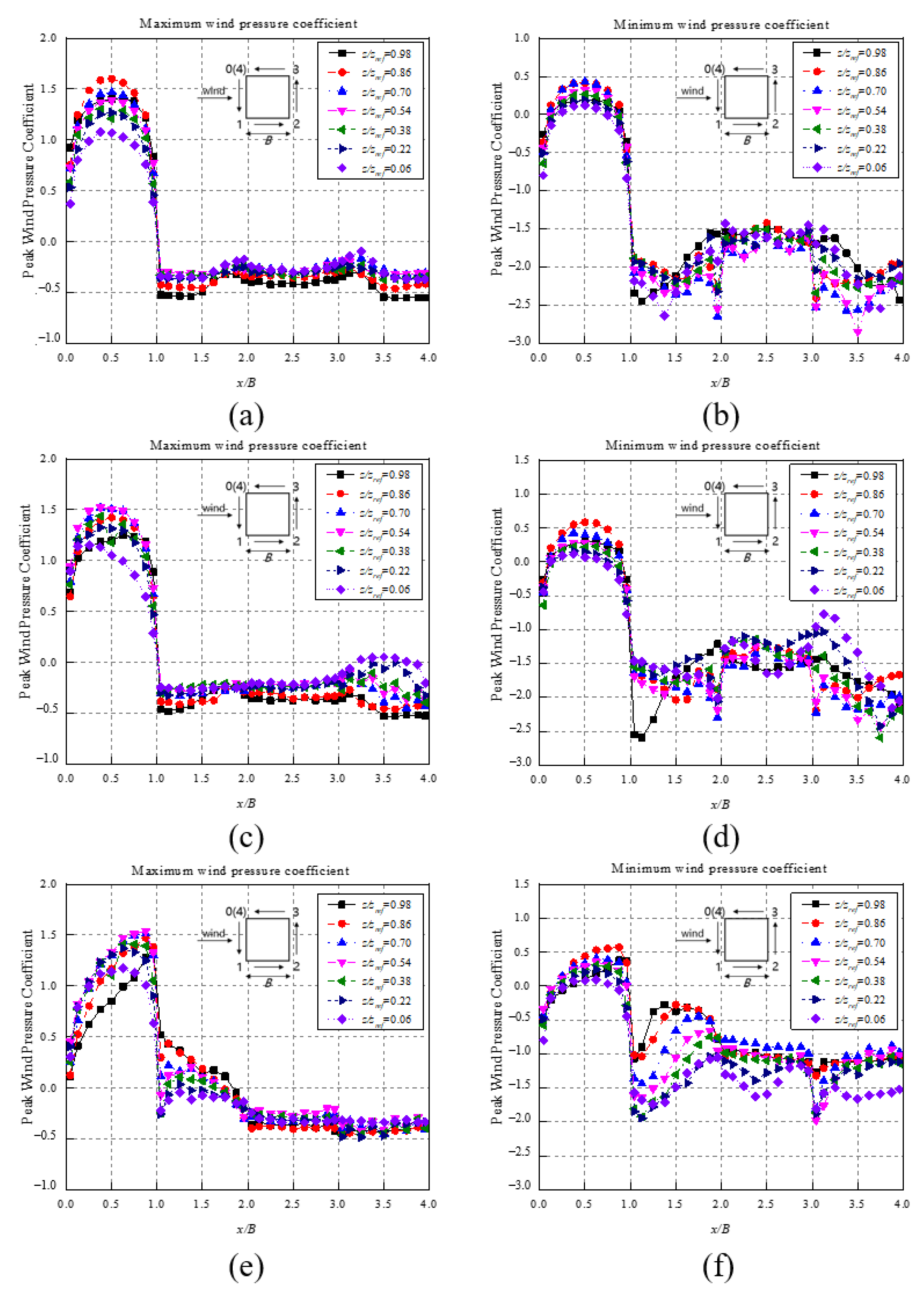
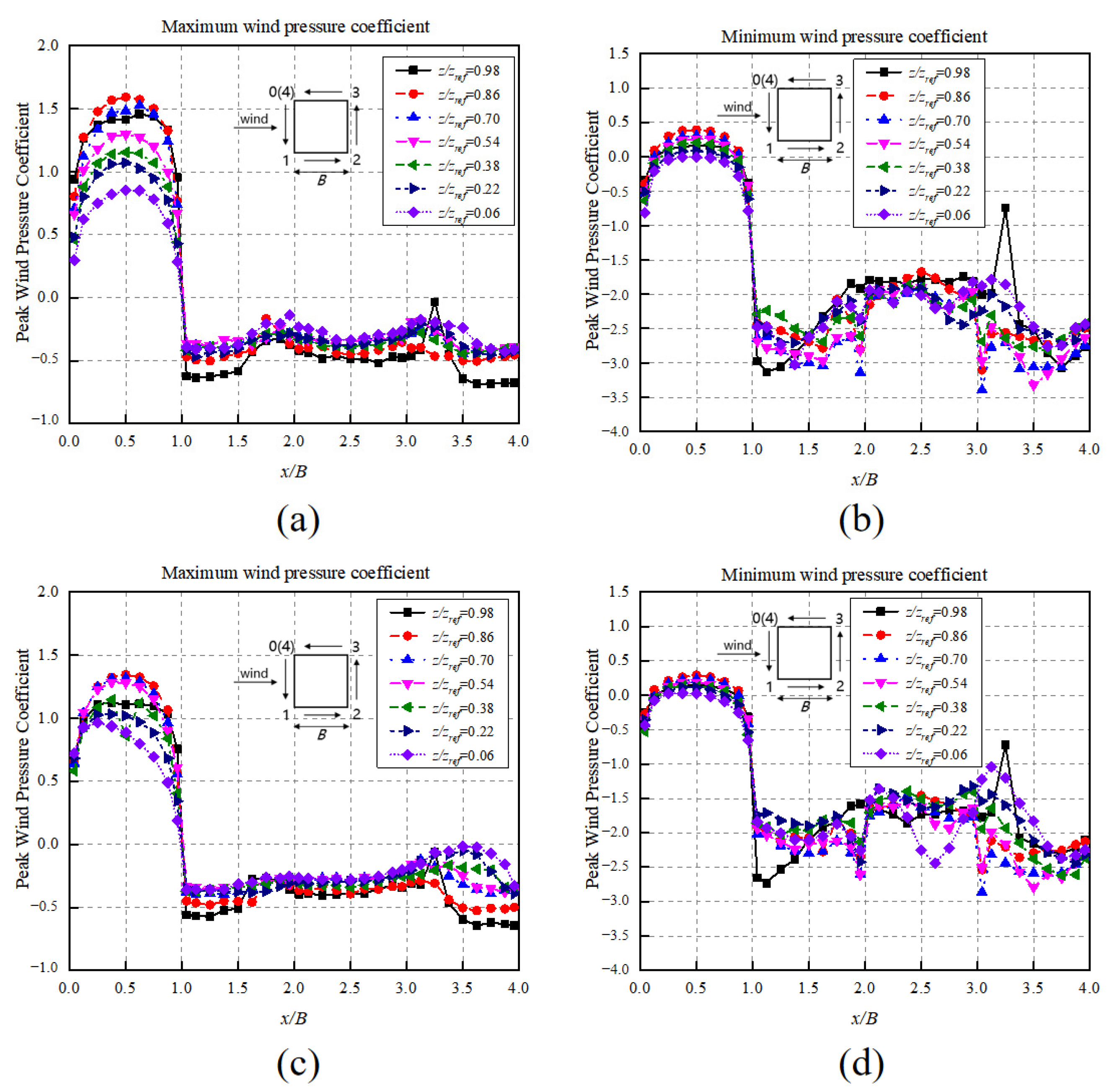

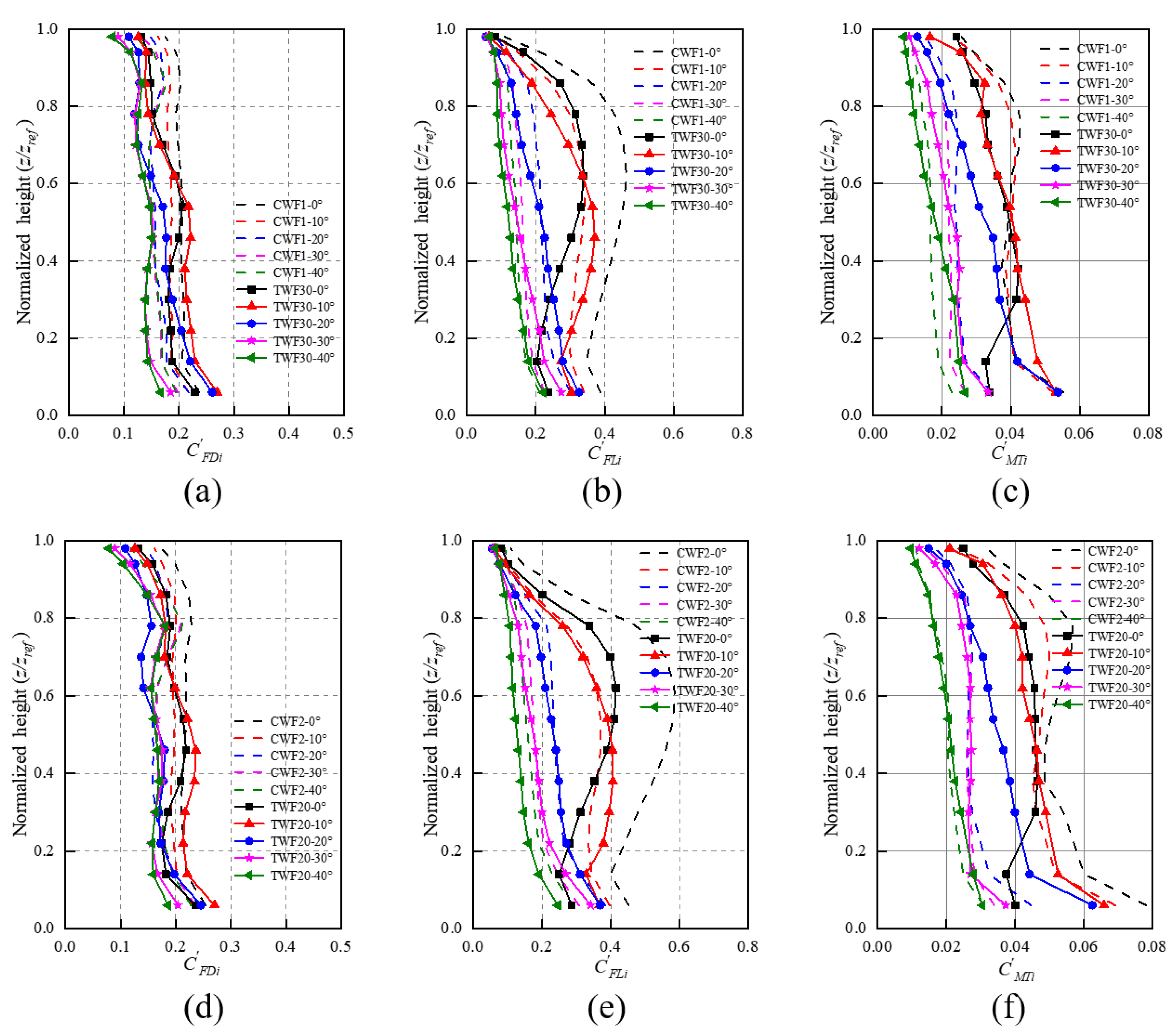
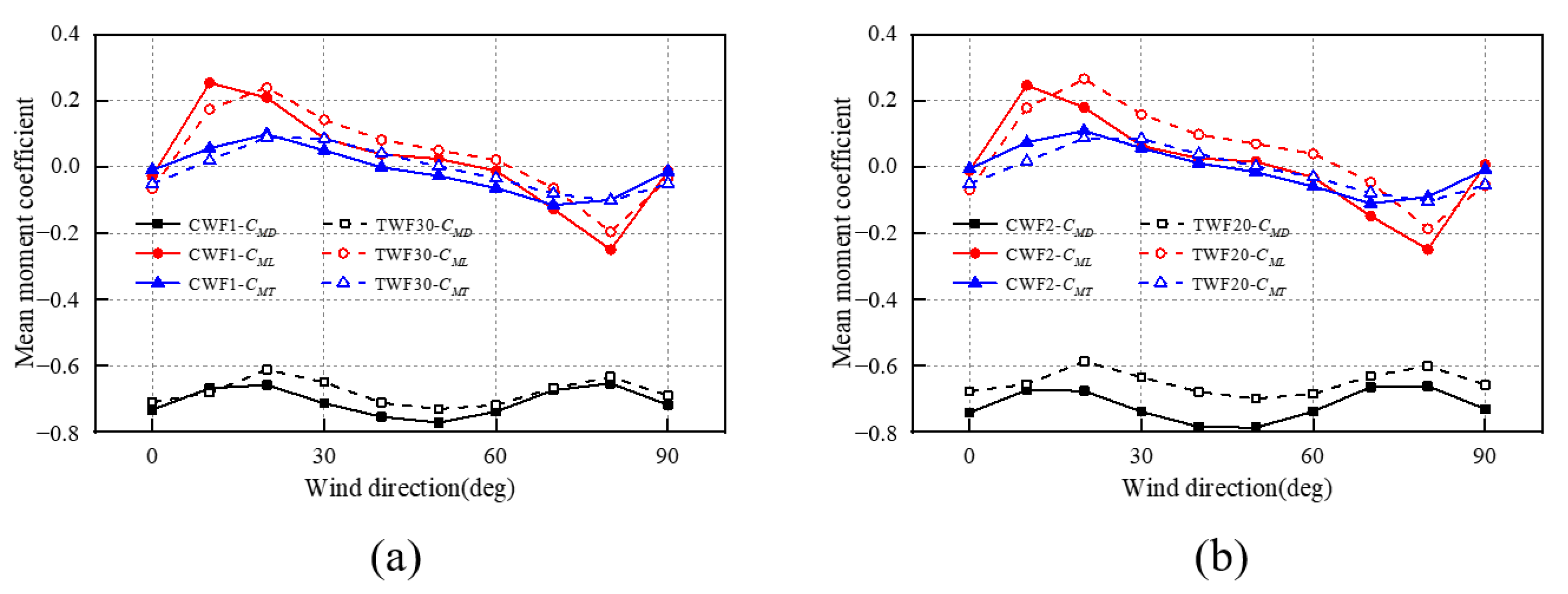
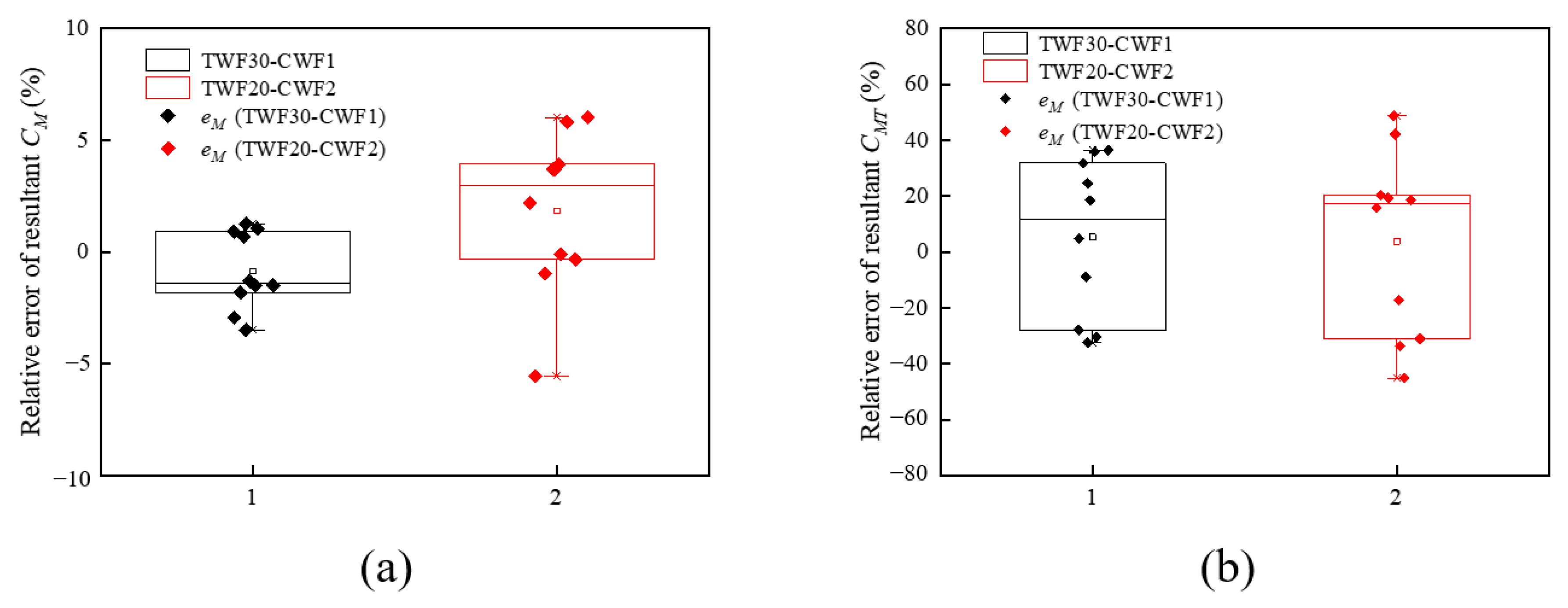

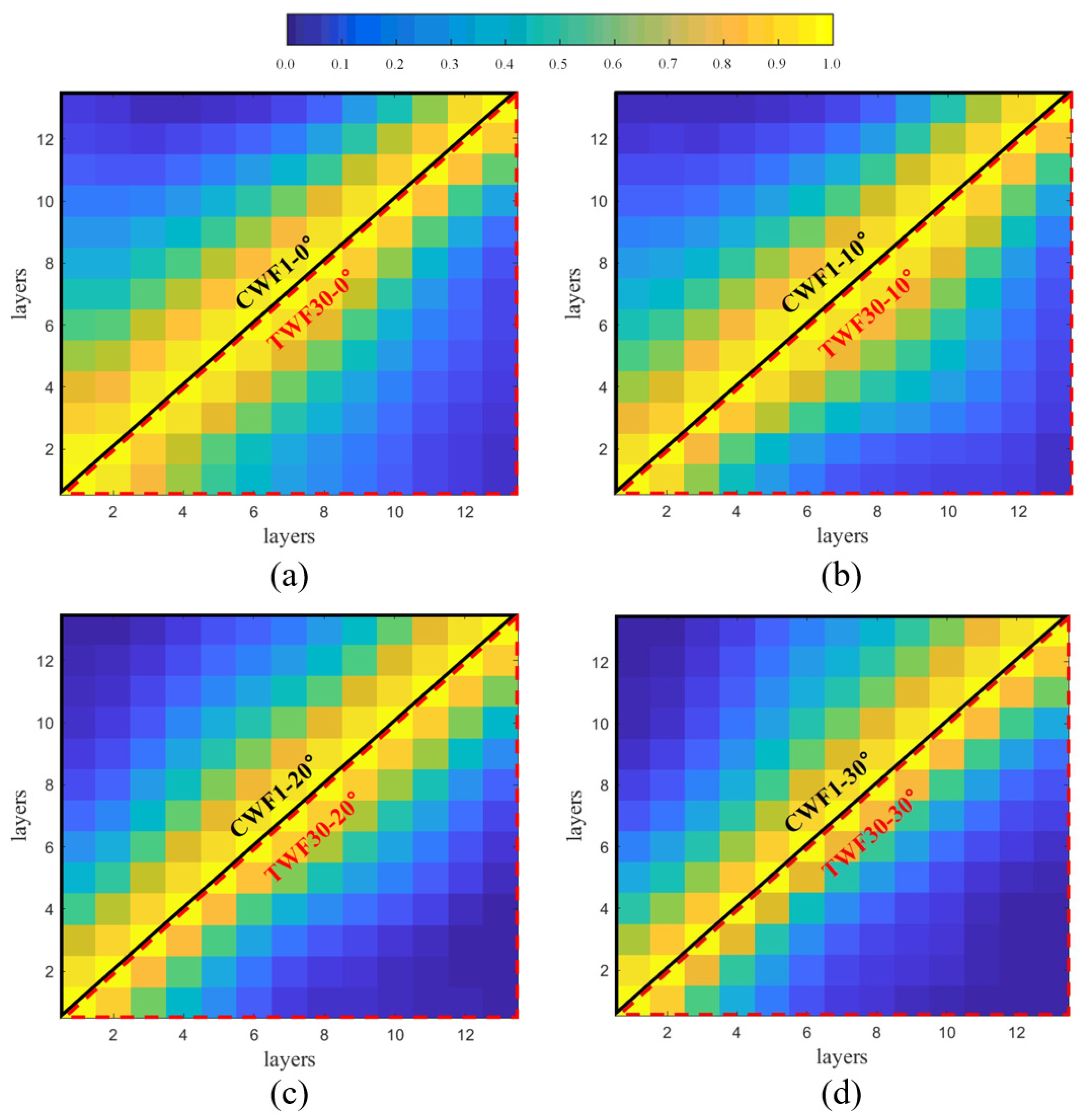
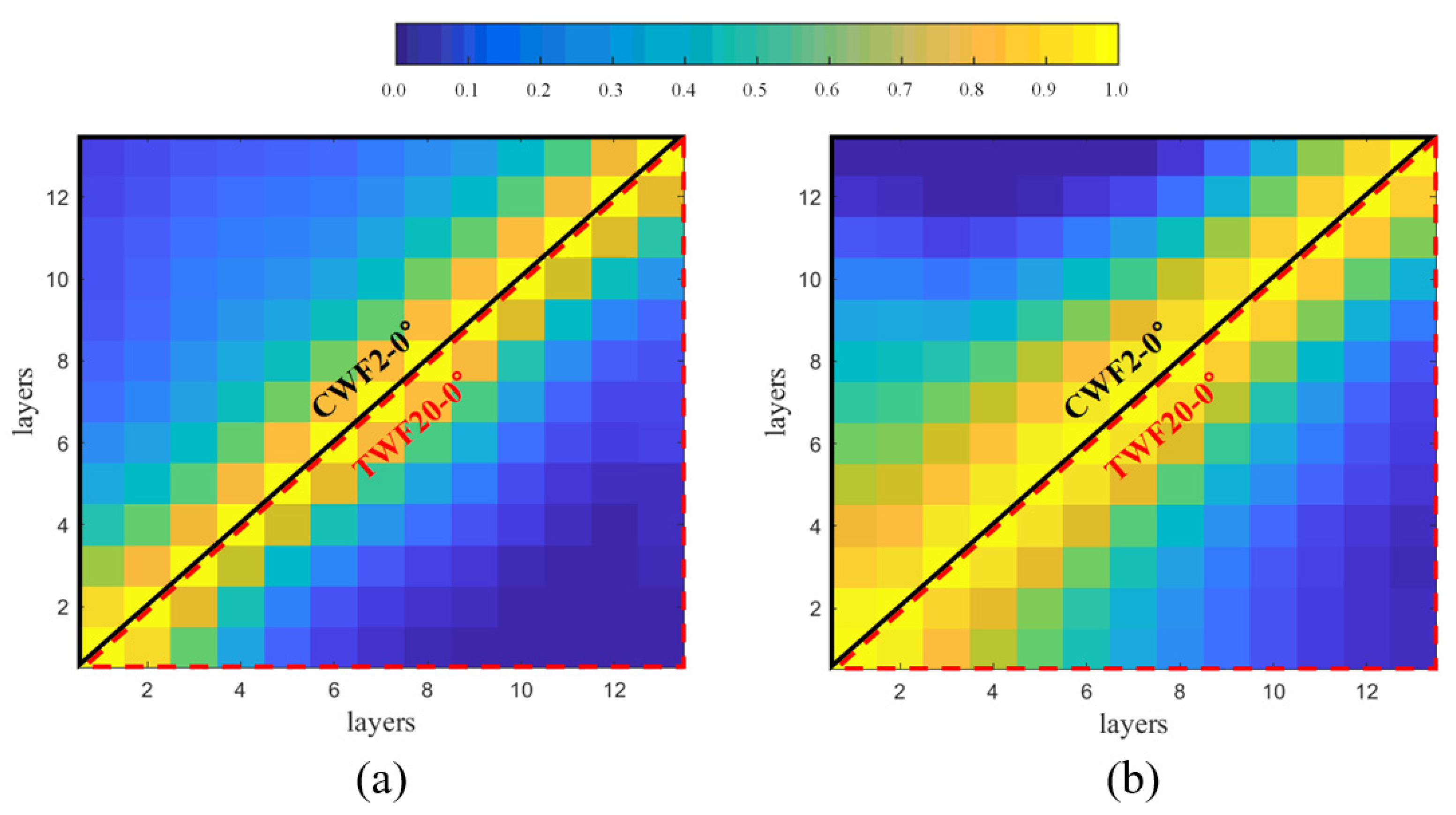
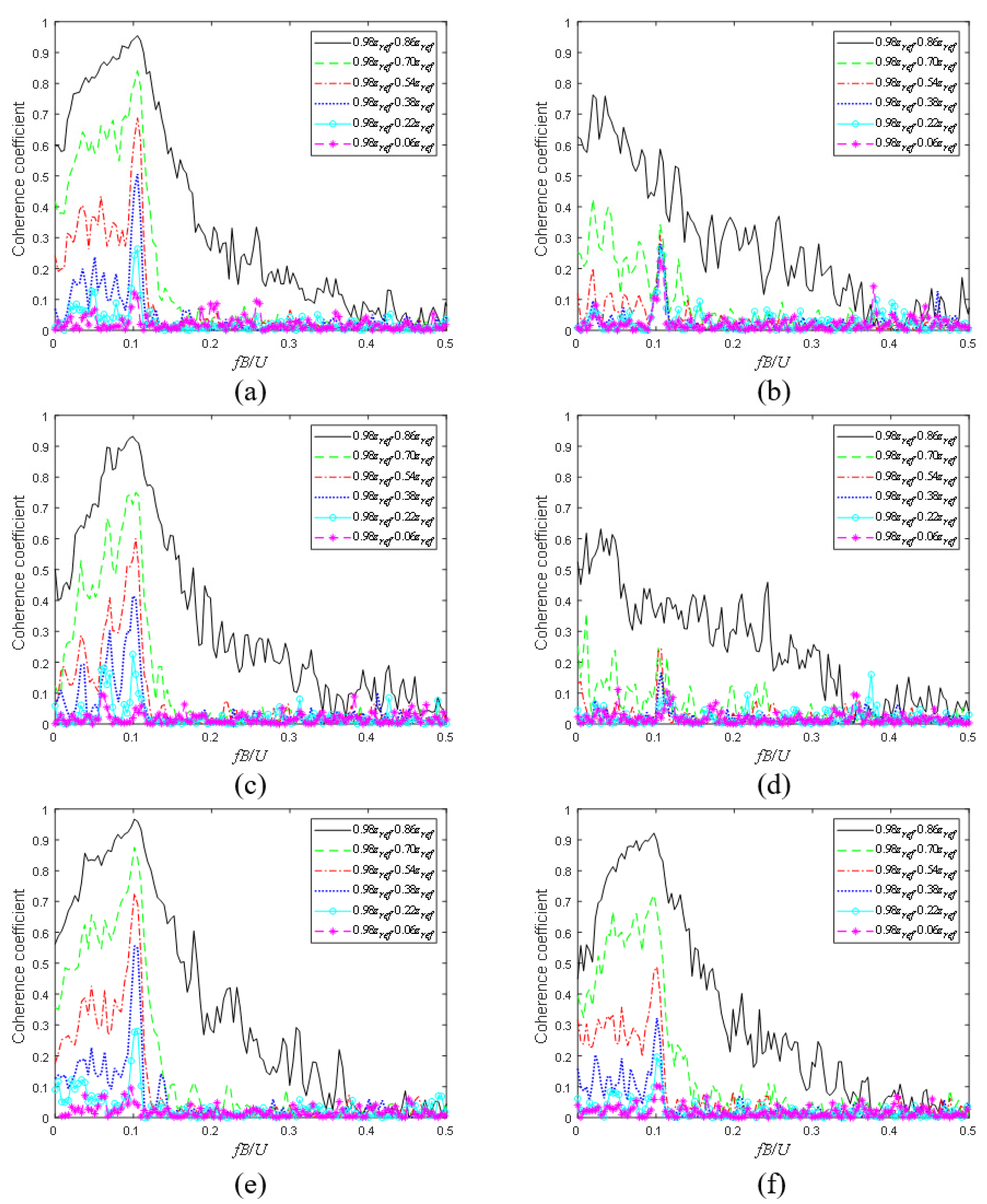
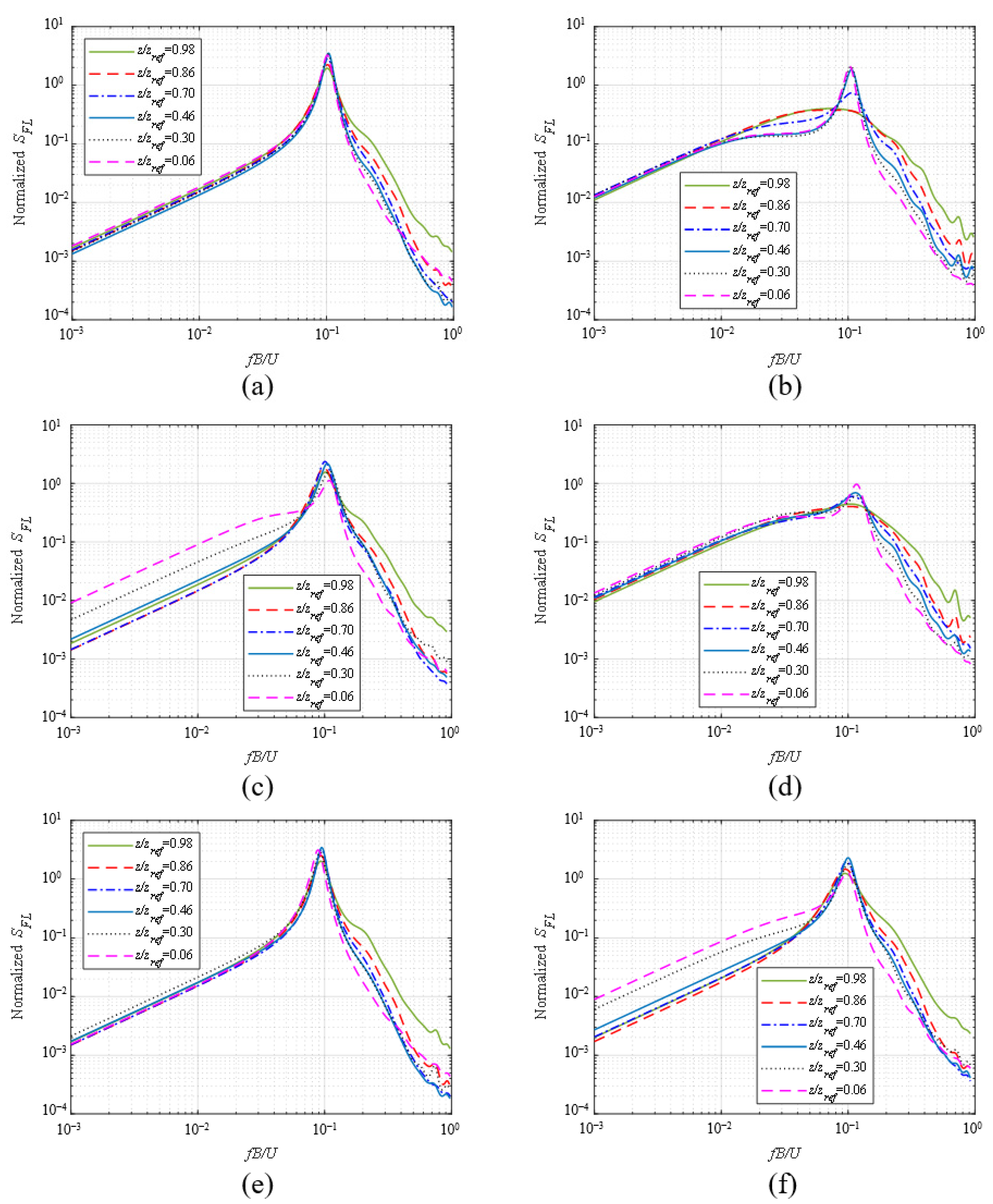
| 1 | 3 | 2 | 4 | 5 | 6 | 7 | 8 | 9 | 10 | |
|---|---|---|---|---|---|---|---|---|---|---|
| 0.22 | 0.16 | 0.13 | 0.11 | 0.096 | 0.081 | 0.067 | 0.054 | 0.042 | 0.029 | |
| −0.35 | −0.091 | −0.019 | 0.022 | 0.049 | 0.066 | 0.077 | 0.083 | 0.084 | 0.078 |
Publisher’s Note: MDPI stays neutral with regard to jurisdictional claims in published maps and institutional affiliations. |
© 2022 by the authors. Licensee MDPI, Basel, Switzerland. This article is an open access article distributed under the terms and conditions of the Creative Commons Attribution (CC BY) license (https://creativecommons.org/licenses/by/4.0/).
Share and Cite
Yan, B.; Li, Y.; Li, X.; Zhou, X.; Wei, M.; Yang, Q.; Zhou, X. Wind Tunnel Investigation of Twisted Wind Effect on a Typical Super-Tall Building. Buildings 2022, 12, 2260. https://doi.org/10.3390/buildings12122260
Yan B, Li Y, Li X, Zhou X, Wei M, Yang Q, Zhou X. Wind Tunnel Investigation of Twisted Wind Effect on a Typical Super-Tall Building. Buildings. 2022; 12(12):2260. https://doi.org/10.3390/buildings12122260
Chicago/Turabian StyleYan, Bowen, Yanan Li, Xiao Li, Xuhong Zhou, Min Wei, Qingshan Yang, and Xu Zhou. 2022. "Wind Tunnel Investigation of Twisted Wind Effect on a Typical Super-Tall Building" Buildings 12, no. 12: 2260. https://doi.org/10.3390/buildings12122260
APA StyleYan, B., Li, Y., Li, X., Zhou, X., Wei, M., Yang, Q., & Zhou, X. (2022). Wind Tunnel Investigation of Twisted Wind Effect on a Typical Super-Tall Building. Buildings, 12(12), 2260. https://doi.org/10.3390/buildings12122260









